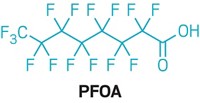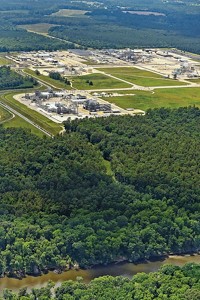Advertisement
Grab your lab coat. Let's get started
Welcome!
Welcome!
Create an account below to get 6 C&EN articles per month, receive newsletters and more - all free.
It seems this is your first time logging in online. Please enter the following information to continue.
As an ACS member you automatically get access to this site. All we need is few more details to create your reading experience.
Not you? Sign in with a different account.
Not you? Sign in with a different account.
ERROR 1
ERROR 1
ERROR 2
ERROR 2
ERROR 2
ERROR 2
ERROR 2
Password and Confirm password must match.
If you have an ACS member number, please enter it here so we can link this account to your membership. (optional)
ERROR 2
ACS values your privacy. By submitting your information, you are gaining access to C&EN and subscribing to our weekly newsletter. We use the information you provide to make your reading experience better, and we will never sell your data to third party members.
Persistent Pollutants
US EPA sets timeline for regulating PFAS
Agency divides “forever chemicals” into 20 categories for toxicity testing
by Cheryl Hogue
October 18, 2021
| A version of this story appeared in
Volume 99, Issue 39

As part of a sweeping Biden administration effort to control pollution from substances known as “forever chemicals,” the US Environmental Protection Agency unveiled a plan Oct. 18 to attack the problem on multiple fronts.
The EPA plan sets timelines for action under several environmental laws to regulate per- and polyfluoroalkyl substances (PFAS), a class of some 2,000 synthetic molecules that persist in the environment. Many are toxic.
Regulatory rubric
The US Environmental Protection Agency is dividing per- and polyfluoroalkyl substances into categories first by chemical structure:
• Perfluoroalkyl acids (PFAAs)
• Perfluorinated precursors of PFAAs
• Perfluoroalkane sulfonamide-based precursors of PFAAs
• Fluorotelomer-based precursors of PFAAs
• Perfluoroalkyls that are not PFAAs
• Silicon PFAS
• Side-chain fluorinated aromatic PFAS
• Other aliphatic PFAS
• PFAS derivatives
Then by physical properties:
• Volatile
• Nonvolatile and containing at least eight carbons,
• Nonvolatile and containing less than eight carbons.
The regulations include federal limits on hazardous PFAS in drinking water and controls on industrial discharges of PFAS-containing wastewater into rivers and lakes. The agency also will deem two widespread PFAS pollutants, perfluorooctanoic acid (PFOA) and perfluorooctanesulfonic acid (PFOS), to be hazardous substances. This move will require companies and federal facilities to report releases of the chemicals into the environment and will make those organizations liable for cleanup.

While the EPA goes through the years-long, legally prescribed federal process to institute these regulations, the agency will establish a voluntary stewardship program challenging companies to reduce their releases of PFAS into the environment.

The agency also plans to require manufacturers of PFAS to test some of their products to provide what the EPA calls “critical information” about the toxicity of these substances.
To do this, the EPA is dividing PFAS into 20 categories based on their molecular structures and physical properties, according to the agency’s testing strategy. The EPA will study existing toxicity information available for substances in each of these categories. Then, the agency will order manufacturers to do additional tests to fill in data gaps.
Creation of categories marks a key development in the regulation of PFAS, which are used in everyday products such as waterproof hiking boots and nonstick pans, as well as in aerospace and military applications. Some activists and members of Congress have called for a ban on all PFAS, an approach the chemical industry calls unscientific.
To form the categories, the EPA first systematically split PFAS into 9 groups based on chemical structure. They are: perfluoroalkyl acids (PFAAs), perfluorinated precursors of PFAAs, perfluoroalkane sulfonamide-based precursors of PFAAs, fluorotelomer-based precursors of PFAAs, perfluoroalkyls that are not PFAAs, silicon PFAS; side-chain fluorinated aromatic PFAS, other aliphatic PFAS, and PFAS derivatives.
The agency further divided these 9 groups into a combined total of 20 categories based on whether the compounds are volatile, nonvolatile and contain at least eight carbons, or are nonvolatile with less than eight carbons.
The EPA says it will issue the first set of orders requiring PFAS manufacturers to conduct the toxicity tests by the end of 2021, with more coming after that.
Also, the agency says that later this year it will complete its toxicity assessments for several PFAS found in public drinking water supplies of hundreds of thousands of Americans. These are Chemours’s GenX fluoroether and a related chemical, hexafluoropropylene oxide dimer acid; perfluorobutanoic acid; perfluorohexanoic acid; perfluorohexane sulfonic acid; perfluorononanoic acid; and perfluorodecanoic acid.
“It’s good news that EPA is finally starting to act” on PFAS, Scott Faber, senior vice president at the Environmental Working Group, says in a statement. “Communities living downwind and downstream of [PFAS] polluters have waited decades.”
The largest US association of chemical makers, the American Chemistry Council, says in a statement that it hopes and expects the EPA’s PFAS regulations “will be consistent with sound science.”





Join the conversation
Contact the reporter
Submit a Letter to the Editor for publication
Engage with us on Twitter